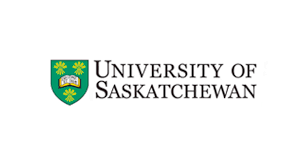University of Saskatchewan: USask to host Defining Moments Canada exhibit on Gerhard Herzberg in celebration of basic research
Sponsored by the Embassy of the Federal Republic of Germany, the exhibit will tour across Canada over the next year. The first stop will be USask where Herzberg and his wife and scientific partner Luise spent 10 years after they were brought from Nazi Germany in 1935 through the efforts of USask’s first president Walter Murray. The exhibit will be on display in the USask Place Riel North Concourse from April 11 to May 5, with free admission.
The exhibit celebrates the life and work of Herzberg, a passionate and outspoken scientist who believed strongly in the value of basic research and of international research collaboration. The panels also highlight Canada’s many important research collaborations that continue today with research partners in Germany.
“Herzberg’s work was indeed a defining moment for Canada, a testament to both the importance of fundamental research where transformative applications become evident over time and of the benefits of building international scientific networks to solve global challenges,” said USask President Peter Stoicheff.
Noting that the United Nations has declared 2022 International Year of Basic Sciences for Sustainable Development, Stoicheff said: “Our dependence as a society on basic science and the value of global scientific collaboration has been underscored over the past two years of the COVID-19 pandemic where scientists such as our own Dr. Volker Gerdts and his team at VIDO have played a key role in international consortia working to develop vaccines and treatments in record time.”
While at USask, Herzberg published his seminal books, mentored many graduate students, and undertook research that was foundational to his 1971 Nobel Prize in molecular spectroscopy. During 40 years at the National Research Council in Ottawa, Herzberg continued to make Canada an international leader in spectroscopy, with applications in a wide range of fields today. His story and its legacy are chronicled at “Herzberg: A Brilliant Life”: https://research.usask.ca/herzberg/
In honour of his legacy, USask established Herzberg scholarships and fellowships for students. To mark the 50th anniversary of Herzberg’s Nobel Prize, USask has created the Herzberg International Student Equity Award and has named both the experimental hall at the USask Canadian Light Source and a lecture theatre in the physics building after Herzberg.
1971 also marked the inauguration of the German Canadian Intergovernmental Agreement on Scientific and Technological Cooperation. The exhibit celebrates 50 years of German-Canadian collaboration in scientific and technological research, highlighting the scientific excellence of many joint projects in the fields of health and medicine, physics, climate sciences, and green energy. The theme of collaboration is apparent throughout the many stories told in the exhibition.
USask currently has more than 30 wide-ranging research agreements with German universities and research centres, many of which include opportunities for student and faculty exchanges. USask is also pursuing three new agreements with German institutions in “one health”, a USask signature area.
Since 2016, almost 700 co-authored publications have been jointly produced by USask researchers and 200 collaborating institutions in Germany, including co-publications with eight Max Planck Institutes. The research spans areas as diverse as environmental science, physics, materials science, water security, crop development, computer science, and aquatic ecotoxicology, and includes collaboration with USask’s Canadian Light Source synchrotron.
USask has recruited talented German-trained scientists, including two as Canada Research Chairs—ecotoxicologist Dr. Markus Hecker (PhD) and materials scientist Dr. Alex Moewes (PhD). Dr. Volker Gerdts (PhD, DVM) leads USask’s VIDO (Vaccine and Infectious Disease Organization) which is developing a vaccine against COVID-19. These and other USask researchers have many partnerships with German institutions and companies.
Over the past six years, major research projects between USask and German institutions have addressed global challenges such as food security, climate change education, environmental sustainability, healthy aging, plant genomics, atmospheric physics, infectious diseases, and climate change in the world’s cold regions.
“Dr. Herzberg’s groundbreaking work in spectroscopy, which is still a relevant tool for R&D, is a shining example of successful collaboration between Germany and Saskatchewan,” said Saskatchewan Honorary German Consul Dr. Michael Oelck (PhD). “The many German-born scientists who now work in Saskatchewan and the numerous research partnerships between German and Saskatchewan research centres reflect the continued strong scientific ties between our two countries.”
Defining Moments Canada is offering additional resources and educational material to educators and students through the digital Herzberg50 and NobelCanadian projects, which can be explored at www.DefiningMomentsCanada.ca. A more in-depth account of Herzberg’s life is available as an interactive story map, as well as interviews with some of Herzberg’s former research fellows.

